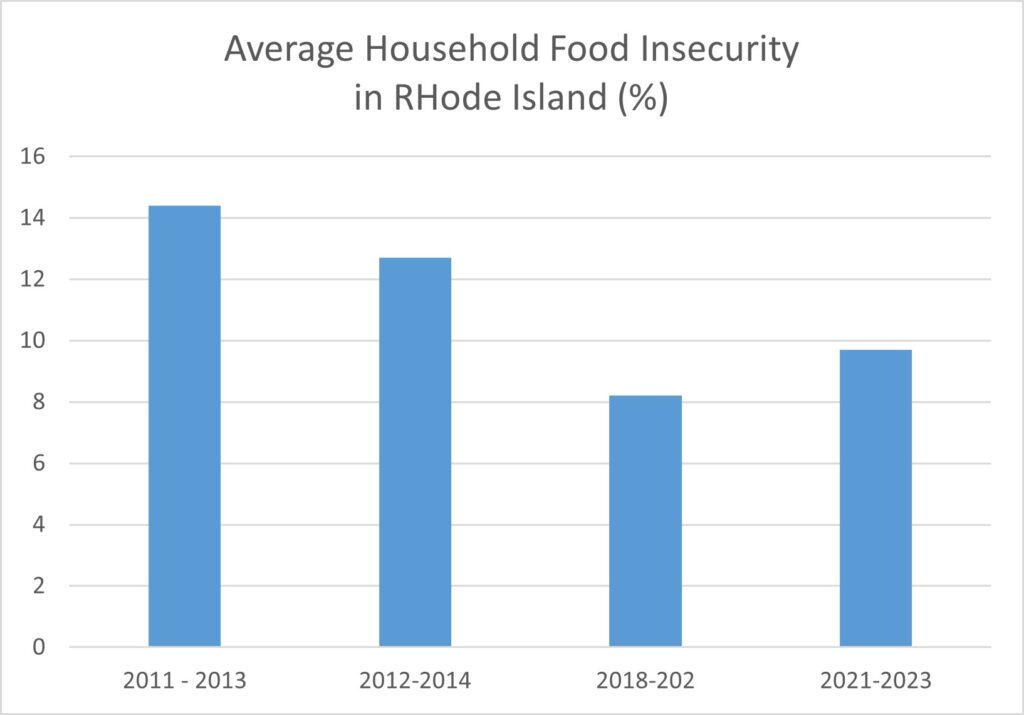- Hunger Poverty Facts 2025 chartThe official U.S. poverty rate is 11.1 (2023) percent (1)
- In Rhode Island, 10.8% of the population was living in poverty. (1)
- The federal poverty guideline for 2025 is $26,650 for a family of three. (2)

- Food security is defined as access by all people at all times for an active and healthy life. Food insecurity reflects the limited or uncertain availability of nutritionally adequate and safe foods and/or limited or uncertain ability to acquire those foods in socially acceptable ways – that is, without having to resort to emergency food sources, scavenging, stealing or other coping strategies.(3)
- In 2023, 13.5 percent of households (or 47.39 million people) were food insecure at least some time during that year. Among households with children under the age of 18, over 17.9% were food insecure. (3)
- In RI, 9.7% of households were food insecure with 4.3% experiencing very low food security.
-
Additionally, about 58 percent of America’s food-insecure households participated in at least one of the three major federal food assistance programs: Supplemental Nutrition Assistance Program (SNAP), The National School Lunch Program, and the Special Supplemental Nutrition Program for Women, Infants, and Children. (3)
- In 2024, the Rhode Island Community Food Bank, through their network of 147 member agencies (e.g., pantries and meal sites) provided food to 82,600 people per month. (4)
- Research indicates that hungry children have done more poorly in school and have lower academic achievement because they are not well prepared for school and cannot concentrate. In fiscal year 2022, 80.0% of all SNAP households included either a child, an older adult or a non-elderly person with a disability. (3)
References:
1. www.census.gov
2. www.aspe.hhs.gov
3. ers.usda.gov
4. rifoodbank.org
